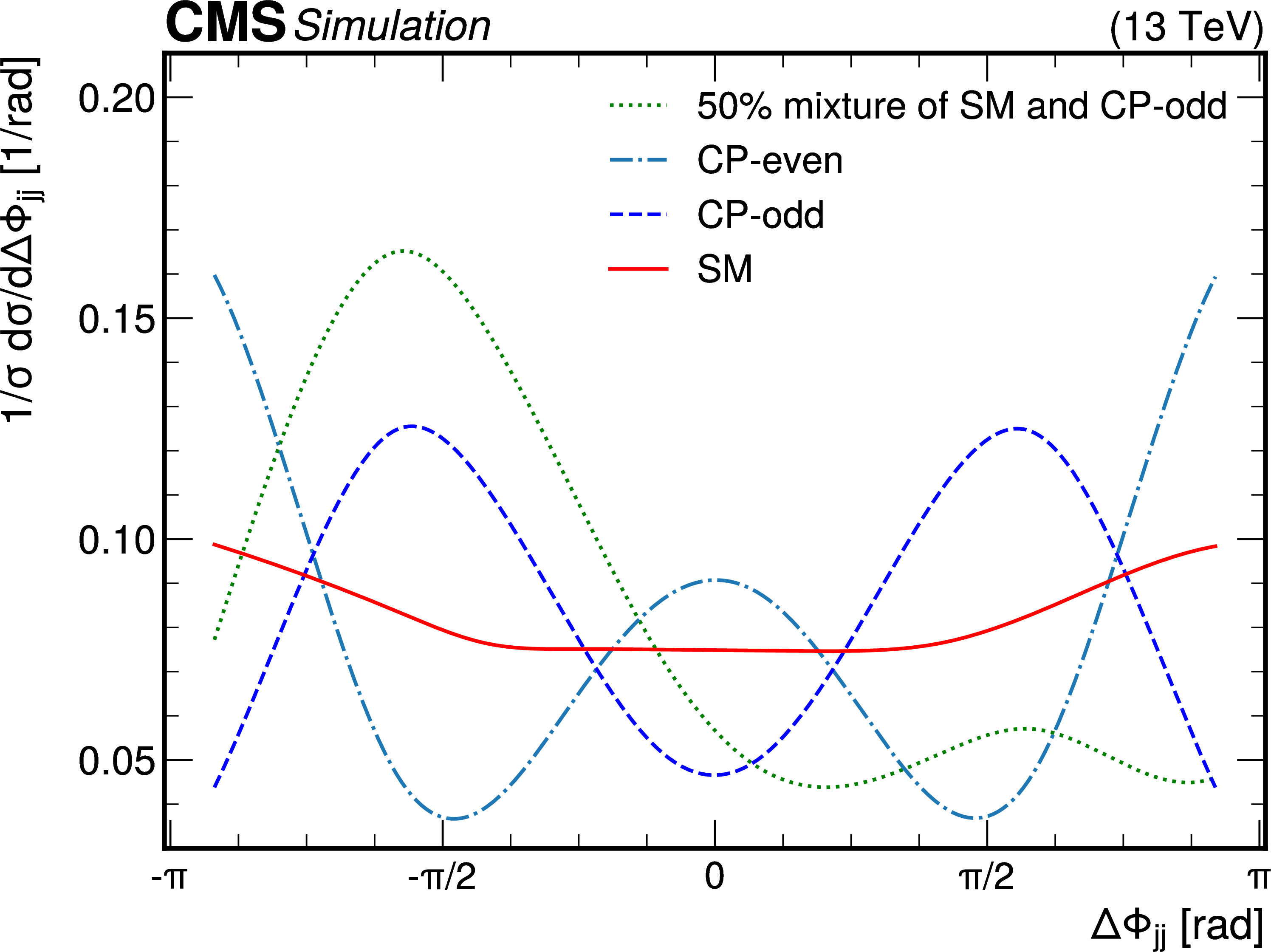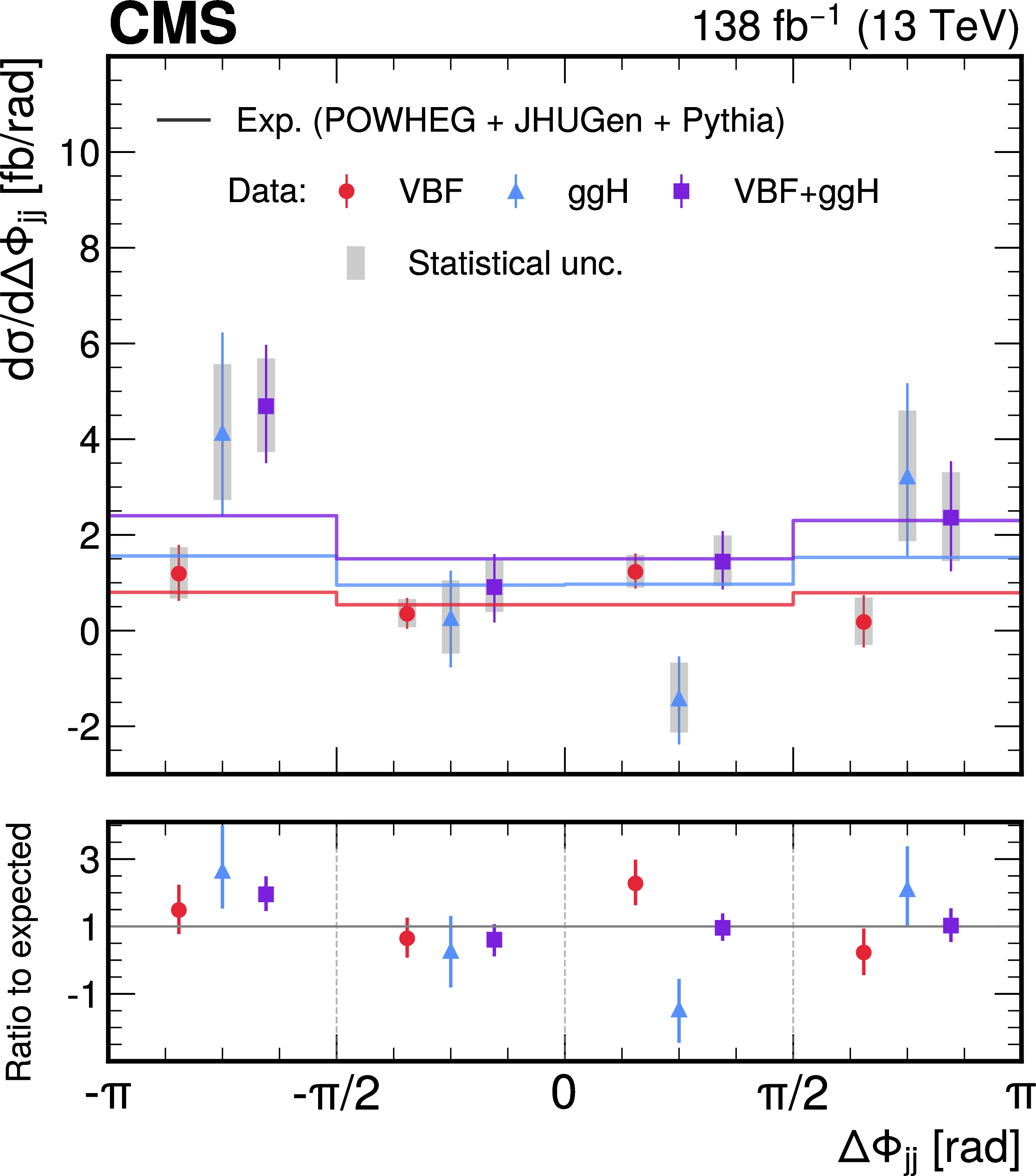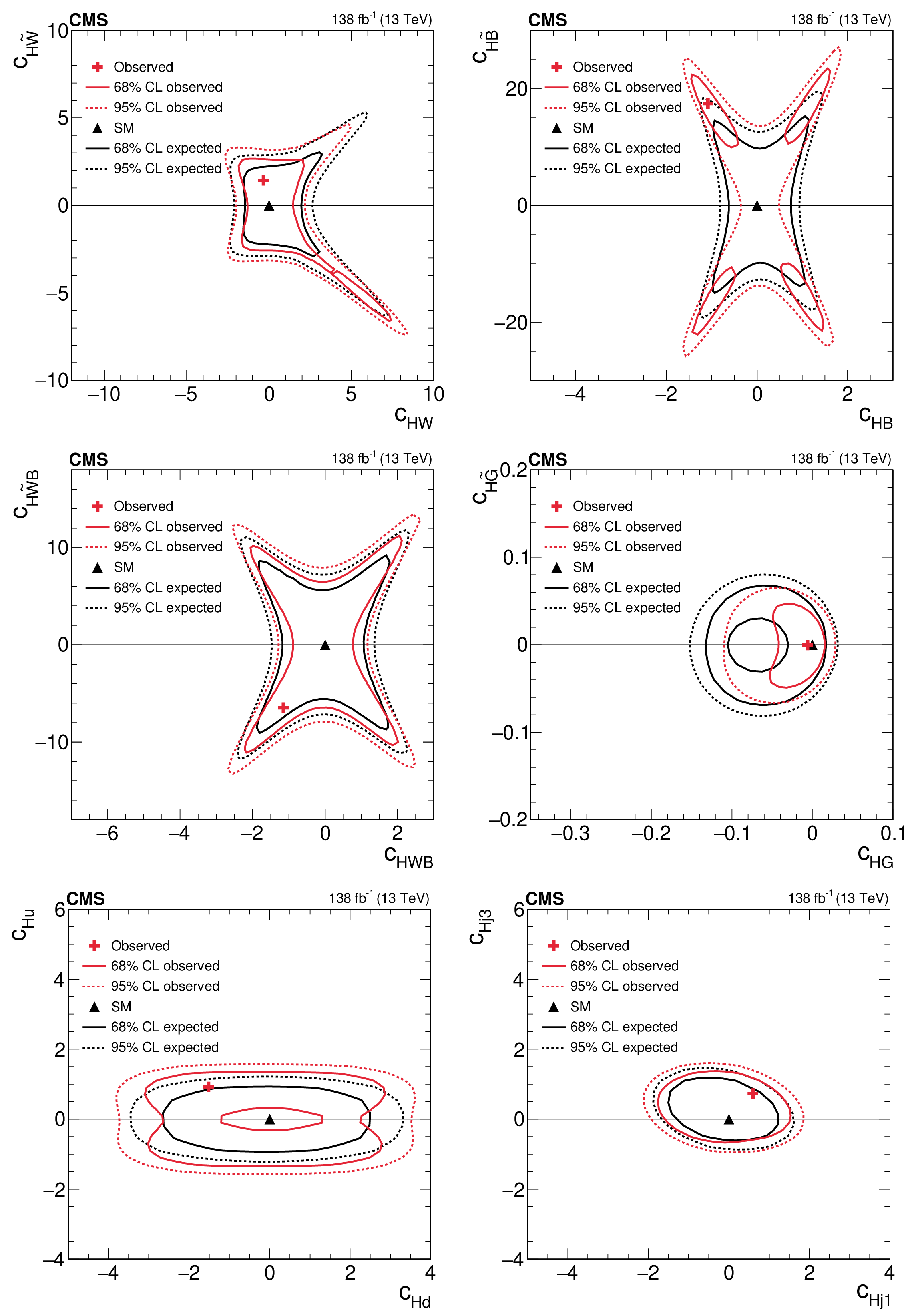Page 3
CMS-HIG-24-004


Page 1
Sep 11th, 2025
Page 2
CMS-HIG-24-004
Model-independent measurement of the Higgs boson associated production with two jets and decaying to a pair of W bosons in proton-proton collisions at √s = 13 TeV
A model-independent measurement of the differential production cross section of the Higgs boson decaying into a pair of W bosons, with a final state including two jets produced in association, is presented. In the analysis, events are selected in which the decay products of the two W bosons consist of an electron, a muon, and missing transverse momentum. The model independence of the measurement is maximized by making use of a discriminating variable that is agnostic to the signal hypothesis developed through machine learning. The analysis is based on proton-proton collision data at √s = 13 TeV collected with the CMS detector from 2012--2018, corresponding to an integrated luminosity of 138 fb-1. The production cross section is measured as a function of the difference in azimuthal angle between the two jets. The differential cross section measurements are used to constrain Higgs boson couplings within the standard model effective field theory framework.
Page 3
CMS-HIG-24-004


Page 4
CMS-HIG-24-004


Page 5
CMS-HIG-24-004

Page 6
Seeing the Forest Through the Trees: Knowledge Retrieval for Streamlining Particle Physics Analysis
J. McGreivy, B. Delaney, A. Beck, M. Williams
Generative Large Language Models (LLMs) are a promising approach to structuring knowledge contained within the corpora of research literature produced by large-scale and long-running scientific collaborations. Within experimental particle physics, such structured knowledge bases could expedite methodological and editorial review. Complementarily, within the broader scientific community, generative LLM systems grounded in published work could make for reliable companions allowing non-experts to analyze open-access data. Techniques such as Retrieval Augmented Generation (RAG) rely on semantically matching localized text chunks, but struggle to maintain coherent context when relevant information spans multiple segments, leading to a fragmented representation devoid of global cross-document information. Here, we utilize the hierarchical organization of experimental physics articles to build a tree representation of the corpus, and present the SciTreeRAG system that uses this structure to create contexts that are more focused and contextually rich than standard RAG. Additionally, we develop methods for using LLMs to transform the unstructured corpus into a structured knowledge graph representation. We then implement SciGraphRAG, a retrieval system that leverages this knowledge graph to access global cross-document relationships eluding standard RAG, thereby encapsulating domain-specific connections and expertise. We demonstrate proof-of-concept implementations using the corpus of the LHCb experiment at CERN.
Page 7
The 690 GeV scalar resonance
M. Consoli, L. Cosmai, F. Fabbri, G. Rupp
Spontaneous symmetry breaking through the Higgs field has been experimentally confirmed as a basic ingredient of the Standard Model. However, the origin of the phenomenon may not be entirely clear, because, in perturbation theory, the vacuum turns out to be a metastable state. An alternative scenario was proposed that implies a second resonance of the Higgs field ℋ with a well delimited mass (MH)theor = 690 (30) GeV. This stabilises the potential, but, owing to an H coupling to longitudinal Ws with the same typical strength as that of the low-mass state with mh = 125 GeV, it would still remain a relatively narrow resonance. Our scope here is twofold. First, leaving out many details, we outline a simple logical path where the, apparently surprising, idea of such a second resonance follows from basic properties of Φ4 theories. Secondly, we spell out a definite experimental signature of this resonance that is clearly visible in various LHC data. As a by-product, the ℋ 3 term gives κλ = (MH/mh) ~ 5.5 consistently with the ATLAS and CMS data.
Page 8
Time, quantum entanglement, and particle decay
J.A. Aguilar-Saavedra
We investigate the role of time ordering in entanglement experiments involving unstable particles, focusing on μ+μ- pairs produced in a maximally-entangled spin state. We analyse the correlations between measurements performed by two experimenters, Alice (who measures μ- spin) and Bob (who measures μ+ decay products). Remarkably, the observed correlations persist irrespective of whether Bob's muon decays before or after Alice's spin measurement. We further discuss different interpretations of the same empirical results depending on the observer's reference frame. The findings reinforce the viewpoint that the Copenhagen interpretation of measurement is a mathematical tool rather than a literal account of physical reality.